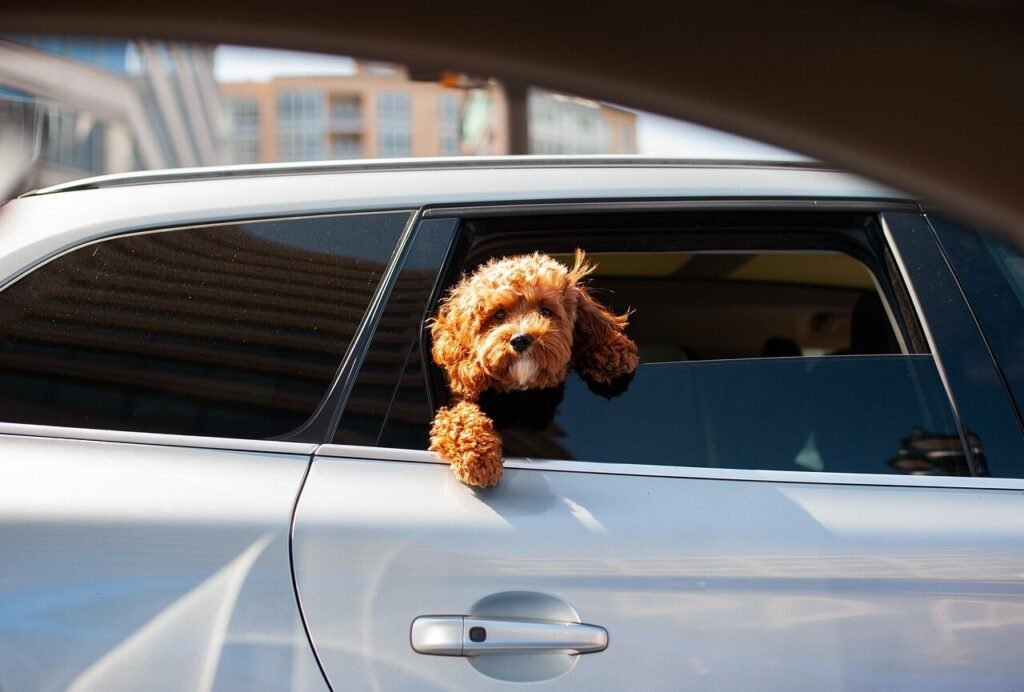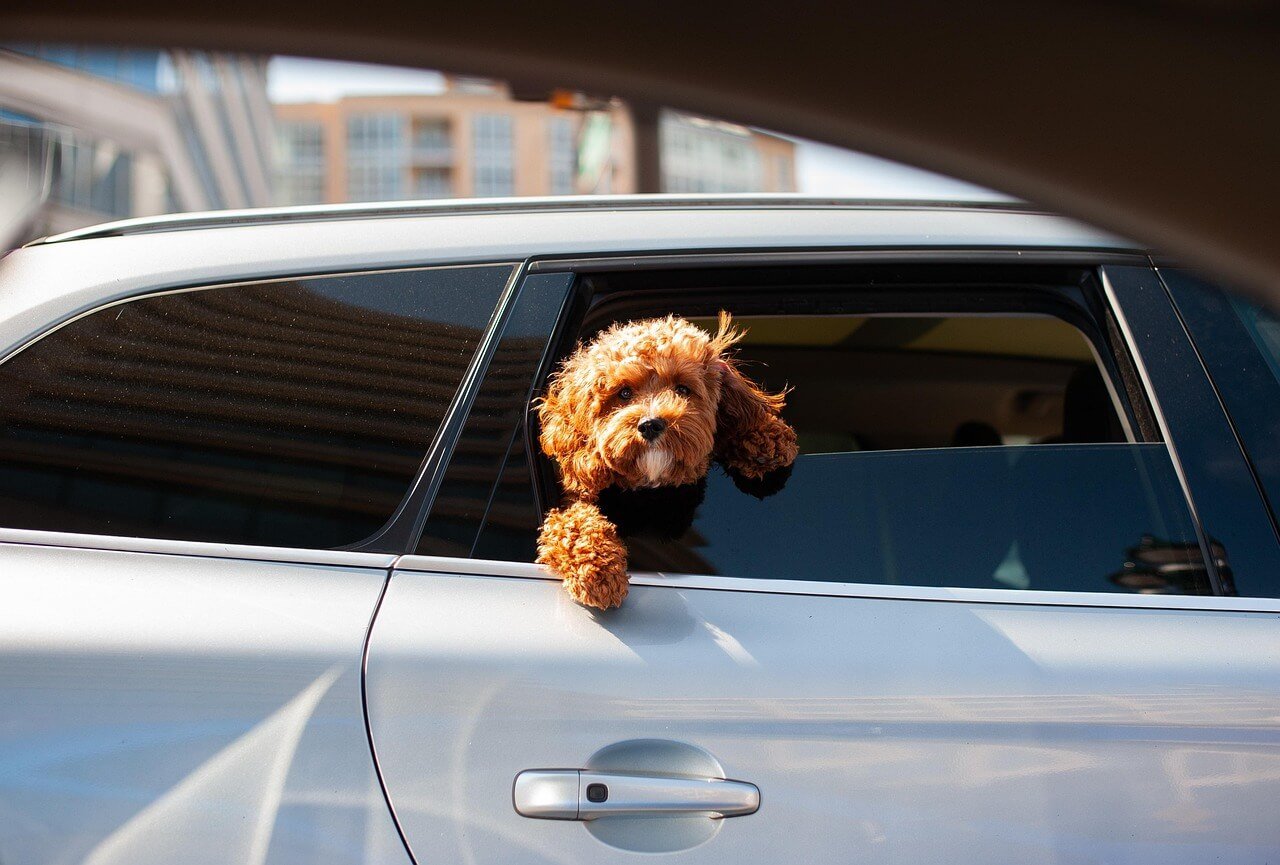Is It Illegal to Leave Your Dog in the Car?
Leaving your dog in the car might seem like a quick and harmless decision, but it can have serious consequences for your pet’s health—and even legal repercussions for you. Every year, countless dogs suffer from heatstroke, dehydration, or worse due to being left unattended in vehicles. Beyond the ethical concerns, many jurisdictions have enacted laws to address this issue, making it illegal under certain conditions. This blog post explores the risks of leaving your dog in the car, the legal implications, and safer alternatives to ensure your furry friend stays safe and comfortable.
Why Leaving Your Dog in the Car Is Dangerous
Even on mild days, the interior of a car can quickly become an oven, putting your dog’s life at risk. Understanding the dangers is crucial to preventing tragedies.
Rapid Temperature Rise:
A car’s interior temperature can increase by 20 degrees Fahrenheit within just 10 minutes, even with windows cracked open.Heatstroke Risk:
Dogs cannot sweat like humans and rely on panting to cool down, making them highly susceptible to heatstroke in hot cars.Lack of Airflow:
Even with windows slightly open, airflow is minimal, trapping heat and reducing oxygen levels inside the vehicle.Cold Weather Dangers:
In winter, cars can act like refrigerators, exposing dogs to hypothermia or frostbite if left unattended for too long.Stress and Anxiety:
Being left alone in a confined space can cause significant stress and panic for dogs, especially those prone to separation anxiety.
The combination of these factors makes leaving your dog in the car a risky choice that should be avoided at all costs.

Legal Consequences of Leaving Your Dog in the Car
Many regions around the world have laws addressing the issue of leaving pets unattended in vehicles. Breaking these laws can result in hefty fines, criminal charges, or even loss of pet custody.
Fines and Penalties:
In some states, leaving a dog in a car under dangerous conditions can lead to fines ranging from hundreds to thousands of dollars.Criminal Charges:
Depending on the severity of the situation, offenders may face misdemeanor or felony charges, particularly if the dog suffers harm.Civil Liability:
Owners may be held financially responsible for veterinary bills or other damages incurred due to neglect.Good Samaritan Laws:
Some jurisdictions allow bystanders to break into vehicles to rescue animals in distress without facing legal consequences.Animal Welfare Investigations:
Authorities may investigate owners for animal cruelty, potentially resulting in the removal of the pet from the household.
Understanding these legal ramifications underscores the importance of prioritizing your dog’s safety over convenience.
Check this guide 👉Why Does My Dog Howl When I Leave? Best 7 Behavior Tips!
Check this guide 👉Why Does My Dog Bark When I Leave? Best 7 Expert Tips!
Check this guide 👉Can You Leave a Dog Alone Overnight? Best 7 Expert Tips!
Risks of Leaving Dogs in Cars | Legal Protections for Animals |
|---|---|
Heatstroke and dehydration | Fines for endangering pets |
Hypothermia in cold weather | Criminal charges for severe neglect |
Lack of ventilation | Good Samaritan laws for rescues |
Increased stress and anxiety | Animal welfare investigations |
Risk of injury or death | Civil liability for damages |
Signs Your Dog Is in Distress After Being Left in the Car
If your dog has been left in a car, even briefly, recognizing signs of distress can help you act quickly to prevent further harm.
Excessive Panting:
Heavy or labored breathing indicates your dog is struggling to cool down.Lethargy or Weakness:
A dog that seems unusually tired or unable to move may be experiencing heat exhaustion.Vomiting or Diarrhea:
These symptoms can signal overheating or dehydration and require immediate attention.Bright Red Gums or Tongue:
Discoloration of the gums or tongue often accompanies heatstroke and should not be ignored.Collapse or Seizures:
In severe cases, a dog may collapse or experience seizures, requiring urgent veterinary care.
Promptly identifying these signs can save your dog’s life and prevent long-term health complications.
Safer Alternatives to Leaving Your Dog in the Car
Instead of risking your dog’s safety by leaving them in the car, consider these practical alternatives to keep them secure and comfortable.
Leave Them at Home:
If running errands, leave your dog at home in a safe, climate-controlled environment whenever possible.Use Pet-Friendly Services:
Many businesses now welcome pets, allowing you to bring your dog along instead of leaving them behind.Hire a Pet Sitter:
Arrange for a trusted friend, family member, or professional pet sitter to care for your dog while you’re away.Visit Dog Parks or Daycare:
Drop your dog off at a local dog park or daycare facility where they can socialize and play safely.Install a GPS Tracker:
For peace of mind, use a GPS collar to monitor your dog’s location and well-being during outings.
These alternatives ensure your dog remains happy and healthy without compromising their safety.
Common Misconceptions About Leaving Dogs in Cars
Many myths persist about leaving dogs in cars, leading to dangerous decisions. Dispelling these misconceptions helps protect pets from harm.
“Cracking the Window Is Enough”:
Even with windows cracked, temperatures inside a car can soar to lethal levels within minutes.“It’s Only for a Few Minutes”:
Emergencies or delays can extend planned “quick trips,” putting your dog at greater risk than anticipated.“My Dog Will Be Fine in Cool Weather”:
Cold weather also poses risks, including hypothermia, depending on the temperature and duration.“My Dog Enjoys Car Rides”:
While many dogs love rides, being left unattended in a stationary car is stressful and unsafe.“I’ll Leave Water Inside”:
Water alone cannot compensate for extreme temperatures or lack of ventilation.
Understanding these misconceptions ensures better decision-making for your dog’s safety.
Steps to Take If You See a Dog in a Hot Car
Witnessing a dog trapped in a hot car can be alarming, but knowing how to respond can save a life. Follow these steps to intervene effectively.
Assess the Situation:
Check the dog’s condition through the window and note any visible signs of distress.Call Authorities Immediately:
Contact animal control, local police, or emergency services for assistance. Provide clear details about the location and circumstances.Document the Incident:
Take photos or videos of the scene, including license plate information, to aid authorities in their investigation.Stay Nearby Until Help Arrives:
Monitor the dog’s condition closely and attempt to comfort them from outside the vehicle if possible.Know Local Laws:
Familiarize yourself with Good Samaritan laws in your area to understand your rights when intervening.
By taking action, you can help prevent tragedy and hold negligent owners accountable.
Tips for Educating Others About the Risks
Raising awareness about the dangers of leaving dogs in cars is vital for fostering a culture of responsible pet ownership. Use these tips to educate others effectively.
Share Information Online:
Post articles, infographics, or personal stories on social media to reach a wider audience.Engage in Community Outreach:
Partner with local shelters or vet clinics to host educational events about pet safety.Distribute Flyers or Posters:
Place informative materials in high-traffic areas like grocery stores, parks, or community centers.Lead by Example:
Demonstrate responsible pet care practices in public settings to inspire others to follow suit.Encourage Reporting:
Urge friends, family, and neighbors to report incidents of dogs left in cars to authorities promptly.
Education empowers communities to protect vulnerable animals and create a safer environment for all pets.
Frequently Asked Questions About Leaving Dogs in Cars
Is it ever safe to leave my dog in the car?
No, it’s never completely safe. Even on cooler days, temperatures inside a car can rise rapidly, endangering your pet.
How long does it take for a car to become dangerously hot?
A car can heat up by 20°F in just 10 minutes, making it unsafe for dogs almost immediately.
What should I do if I see a dog left in a hot car?
Call local authorities immediately and document the situation while waiting for help to arrive.
Are there any exceptions to the laws against leaving dogs in cars?
Some areas allow exceptions for short periods if proper ventilation and cooling measures are in place, but these are rare and vary by location.
Can I get in trouble for breaking a car window to save a dog?
In regions with Good Samaritan laws, you may be protected from liability if you act responsibly and follow local guidelines.
Prioritizing Your Dog’s Safety Over Convenience
Leaving your dog in the car, even for a short period, poses significant risks to their health and well-being. With laws increasingly reflecting society’s commitment to protecting animals, it’s essential to understand both the dangers and legal implications involved. By adopting safer practices and exploring alternatives, you can ensure your dog remains happy, healthy, and protected. Remember, a few extra minutes of planning can make all the difference in safeguarding your beloved companion.
How Do I Know If My Cat Died Peacefully? Best 7 Expert Tips! Discover the quiet signs of a peaceful feline passing and find comfort in their final moments.
How Do I Know If My Cat Died Peacefully? A Gentle Guide for Heartbroken Owners Losing a cat is not just …
Why Do Abyssinian Cat Colors Matter? Best 7 Expert Tips! Discover the genetics, rare hues, and care secrets behind Abyssinian coat colors for a healthier, happier cat.
Cat Enrichment Activities: Best 7 Expert Tips! Unlock your cat’s natural instincts with proven strategies for mental stimulation, physical health, and lasting happiness.




